#17th century bce
Explore tagged Tumblr posts
Text

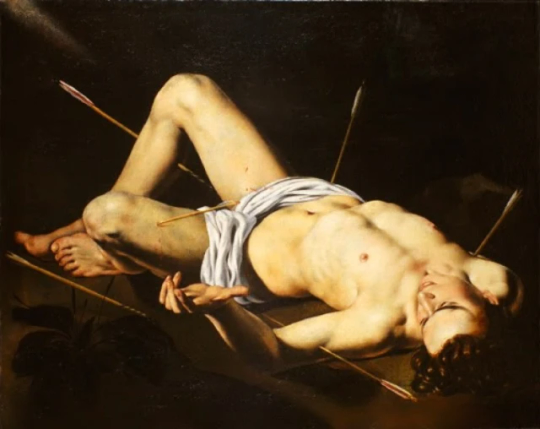






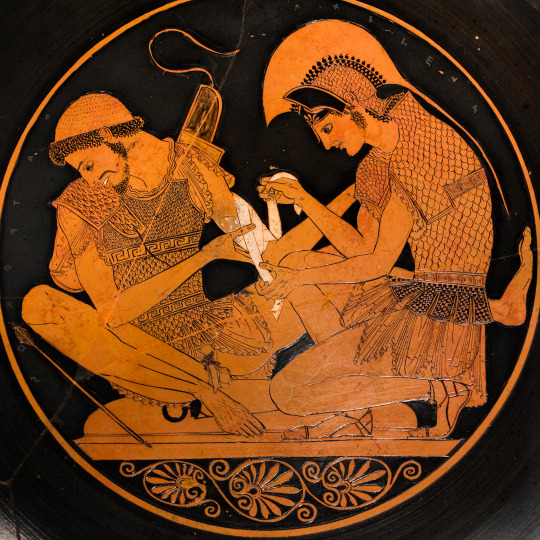



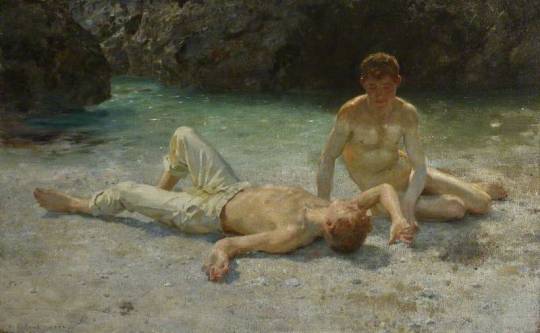


very normal heterosexual webweave on mobile the alt text icon obscures some of the words. sorry. don't use mobile ig - car seat headrest / beach life-in-death (twin fantasy, 2018) - Saint Sebastian, school of Nicolas Regnier, circa 17th century - Michel de Montaigne, On Friendship - bob dylan / he was a friend of mine - sufjan stevens / the predatory wasp of the palisades is out to get us! - Henry Scott Tuke, A Cadet on Newporth Beach, near Falmouth with Another Boy in the Sea - black country, new road / snowglobes - sufjan stevens / mystery of love - Achilles Tending to Patroclus (the Sosias Painter, c. 500 BCE) - sufjan stevens / the predatory wasp of the palisades is out to get us! - car seat headrest / bodys (twin fantasy, 2018) - sufjan stevens / mystery of love - Henry Scott Tuke, Noonday Heat - vampire weekend / diplomat's son - sufjan stevens / the predatory wasp of the palisades is out to get us!
#web weave#webweaving#webweave#car seat headrest#twin fantasy#st sebastian#saint sebastian#michel de montaigne#sufjan stevens#henry scott tuke#black country new road#achilles and patroclus#achilles x patroclus#mystery of love#lgbtq#gay#homoerotism#mlm
2K notes
·
View notes
Text
"In historical context though-"
This book has potatoes and chilis in supply and demand when these were not traded until the late 15th century... and not used for cuisine and a foods crop cultivator in China well into the 17th and 18th century almost 200 years later. Folding fans that are seen abundantly were not popularized until the 13th century. Taoism was at its largest during the Warring States period of 450 BCE–c. 300 BCE with the epigram of Tao Te Ching. Confucianism became the abundant practice as of 206 BCE to 220 BCE with the authoring of The Analects. It uses fabricated province names for real world Chinese provinces that are relegated to a simple five, when there are of 22 (claimed) and have been the most stable to survive since the Yuan dynasty 1271-1368. Idioms used vary through the centuries and are still a staple of modern day vernacular. The version of futou Jin Guangyao alone wears was a wushamao (乌纱帽), used in the Ming dynasty 1368-1398. Futou was made a part of ministerial and court attire during the reign of Emperor Wu 560 BCE.
The author has said it has no standing Imperial Dynasty it takes place in and has borrowed aesthetics from the Han, Wei-Jin, Song, Tang, Ming and even Qing. All of which had seen several turns of dynasty from Han to Mongol to Han divine rulings. So no, there is no historical context to take in regard when it comes to Madam Yu's overt abuse, to Jiang Cheng's abuse, the clan's classisms and hypocrisy.
It was written in an alternate fantasy of China without this context of real world history and through the lens of modernity of its author. Do not use a history that does not pertain to a novel that is not has not and was never called historical.
128 notes
·
View notes
Text

















portrayals of bats before 1800:
Bat pendant - jade - China - Shang Dynasty - c.1600-1046 BCE Mastiff Bat Vessel - Moche culture of Peru - 200-850 Codex-style cylinder vase with bat holding plate of body parts - Mayan - c.680-750 The Bat God - terra cotta - Tezoquipan - Aztec - c.700 Bat - Aztec Bat - Aztec Bat - from the Aberdeen Bestiary - England - c. 1200 Bats - from De Natura animalium - Cambrai - c. 1270 Bat - from Pabenham-Clifford Book of Hours - England - c. 1315-1320 Albrecht Durer (German, 1471-1528) - Bat with outstretched wings, and another with wings folded - 15-16th century Albrecht Durer (German, 1471-1528) - stylized bat from Melencolia I - print - 1514 Pieter Boel (Flemish, 1622-1674) - Five Bats - 17th century The Batt - from 'A Description of a Great Variety of Animals and Vegetables' - edited by Thomas Boreman - 1736 bat-shaped vessel - ceramic - China - Qing Dynasty, 1736-95 bats flying over waves - porcelain bowl - China - Yongzheng period (1722-35) Pierre-Paul Barraband (French, 1767-1809) - Bat - 1793 Pierre-Paul Barraband (French, 1767-1809) - Bat - 1794
#art by others#other's artwork#sculpture#painting#ceramic#drawing#print#bats#illumination#Moche#Mayan#Aztec#Albrecht Durer#Pieter Boel#Pierre-Paul Barraband#China
60 notes
·
View notes
Photo
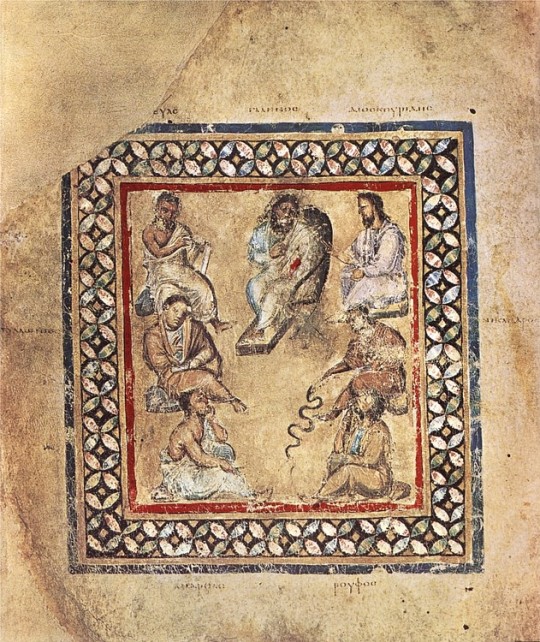
Galen
Galen (129-216 CE) was a Greek physician, author, and philosopher, working in Rome, who influenced both medical theory and practice until the middle of the 17th century CE. Owning a large, personal library, he wrote hundreds of medical treatises including anatomical, physiological, pharmaceutical, and therapeutic works. With principles based on his anatomical dissections, he spoke and wrote extensively on the anatomy of the body emphasizing the role of the heart, brain, and blood. While he criticized many of his contemporaries, he embraced the ideas put forth by the Greek physician and theorist Hippocrates (460-370 BCE), primarily his concept of the four humours that controlled the human condition: blood, phlegm, black bile, and yellow bile.
Much of our knowledge of early medicine comes from Galen's writings. Like Hippocrates and other theorists Galen believed that illness was caused by an imbalance, so how does one restore the balance: bleeding, enemas, and vomiting. Aside from his writings on medicine, he wrote extensively on language, logic, psychology, ethics, and even moral philosophy. Regrettably, most of his works no longer exist or survive only in fragments. He lost many of his writings, instruments, and medicines in a storeroom fire in 192 CE.
Early Life & Education
Born in 129 CE in the Asia Minor city of Pergamon, Galen was the son of the wealthy architect Nikon and was initially educated in both rhetoric and philosophy. The Pergamon of his youth was home to a sanctuary dedicated to the god of medicine Asclepius. His father, a member of the Roman elite, had assisted in the renovation of Pergamon's temple complex dedicated to Zeus. At the age of 16, Galen changed educational directions, possibly at the suggestion of his father, and decided to study medicine, eventually completing his schooling at both Smyrna, located on the Aegean coast, and Alexandria where he studied both anatomical science and physiological theory. At the time Alexandria was the premier center for the study of medicine in the ancient world. After the death of his father in 149/50 CE, he continued his studies as he traveled throughout the Mediterranean. In 157 CE he returned to his home town of Pergamon to be the physician to a group of gladiators; a position that provided him with an opportunity to study anatomy.
Continue reading...
61 notes
·
View notes
Text
Been cultivating a list of foods that Armand could have eaten when he was alive because I'm now obsessed with looking up the histories of various foods on wikipedia here's what I got so far
✅ Butter (been around since like 8,000 BCE)
❌ Chocolate (didn't get to Europe until the 17th century)
❌ Coffee (not in Italy until the 1580s)
✅ Cinnamon (according to @prttynrgnl Amadeo would've had access to it due to Venetian control of the spice trade at the time)
❌ Tomatoes (juuuuuuuust BARELY missed this one. Earliest writings of tomatoes being in Italy are from the 1540s)
✅Garlic (available in Italy as far back as Ancient Rome)
Anyway I'll update this if I end up looking for more
#me#can you tell im obsessed with armands relationship with Food yet#iwtv#interview with the vampire#iwtv amc#armand#armand iwtv
26 notes
·
View notes
Text

262 notes
·
View notes
Text
Episode 109: Let's Get Kraken

In the most recent episode, Cody and Garth dive into the deep waters to talk about Kraken! And in Garth's corner, he covers the art of figureheads (the sculptures of the front of ships)!
Enjoy the images discussed in the episode below (trigger warning: the last two images are of dead animals, there's no blood or obvious signs of distress but y'all deserve a warning nonetheless)! And please come join the episode discussion on the Least Haunted Discord!
Sorry for the late post, I was hunting for a lake monster!
The book Cody read for the episode: Monsters of the Sea by Richard Ellis.

The Swine Whale (left) and possibly Kraken (right) Carta Marina map of Scandinavia (1539).

Illustration by Denys de Montfort. Historie naturelle des Mollusques (1802).

In 1861 the French ship Alecton recovered part of a Giant Squid, Achiteuthus. This event would inspire Jules Verne when writing 20,000 Leagues Under The Sea.

A Scandinavian grapnel anchor, aka Krake, made from the top of a spruce tree.
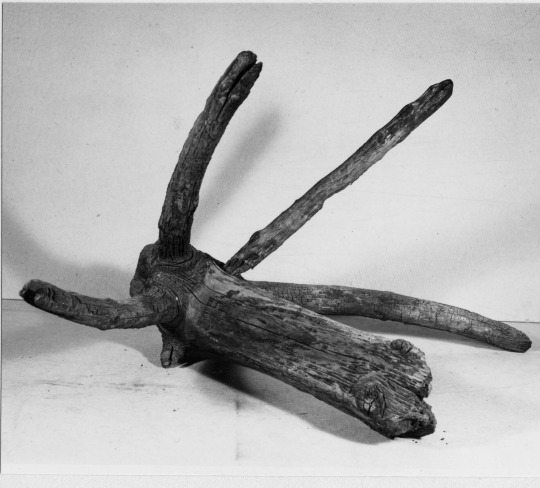
"The Kraken" in 1981's Clash of The Titans, although a feat of stop motion animation by Ray Harryhausen, NOT A KRAKEN.

The Mollusk album by Ween. The inspiration for SpongeBob SquarePants according to show creator, Stephen Hillenburg.

They Might Be Giants album Apollo 18 limited edition Zoetrope vinyl! Only 240 were ever made, Cody has #195 and Garth has #196.

GARTH'S CORNER, GARTH'S CORNER, GARTH'S FIGUREHEAD CORNER!
Here are some of the figureheads mentioned in Garth’s Corner. Special props to the YouTube Channel Baltic Empire for “Carved works and Figureheads: A History of Ship Decorations.” Garth also credits Chris Riley for his article “The History of Ship Figureheads.”
Here’s a carving of an elk’s head found in Säkkijärvi, Finland. It was made between 1750 and 1,500 BCE and is thought to have been attached to the front of a boat.

Some examples of Greek Ships with eyes.

The Oseberg Ship, a lavish ship that was buried in Norway some time in the 800s CE.

A model of the 80-gun Naseby (1655) showing Oliver Cromwell on a horse.

A mezzotint etching by Robert Sayer “Hercules as Ship's Figurehead” (1788).

A modern ship, Neptune, a replica of a 17th century Spanish galleon, originally built for the film "Pirates" (1986).
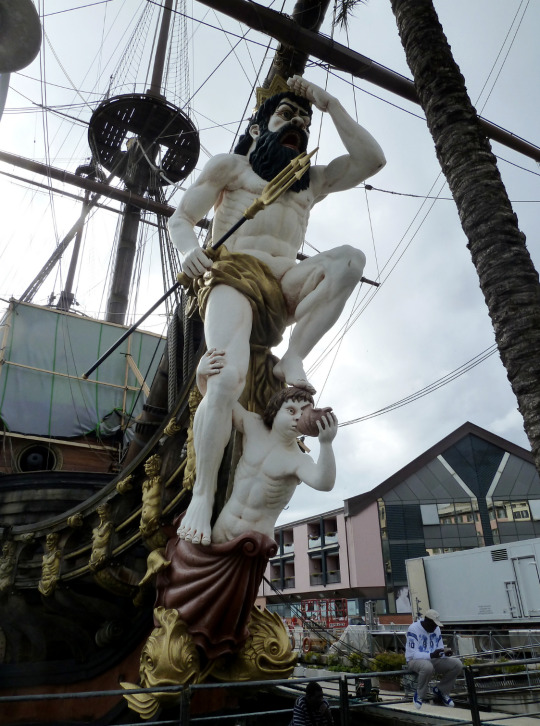
And finally, here’s an awkward mermaid Garth saw online. Not sure where he found it but here she is.

~~~~~~~~~~~~~~~~~~~~~~ Trigger Warning Below ~~~~~~~~~~~~~~~~~~~
Dead Sperm Whale with squid scars on its skin.

Dying Architeuthis found in Toyama Bay, Japan 2015.

#leasthaunted#podcast#funny#paranormal#podcasts#skeptics#garth's corner#kraken#cryptozoology#cryptids#mermaids#figurehead#squids
32 notes
·
View notes
Text
The History of Astrology: A Journey Through Time and Thought
Astrology, the study of the positions and movements of celestial bodies and their purported influence on human affairs, has been a fixture in human culture for millennia. Its evolution reflects a complex interplay between science, philosophy, and spirituality, showcasing how societies have sought to understand their place in the cosmos. This essay explores the historical development of astrology, from its ancient origins to its contemporary forms.

Ancient Beginnings: Mesopotamia and Egypt
The roots of astrology can be traced back to ancient Mesopotamia, around the 3rd millennium BCE. The Babylonians, who were among the first to develop systematic astronomical observations, used these observations to create a form of astrology that combined celestial phenomena with predictions about earthly events. This early astrology was primarily concerned with omens and was heavily intertwined with the religious and political life of the time.
By the 2nd millennium BCE, Egyptian astrology had begun to emerge, blending Mesopotamian influences with local beliefs. The Egyptians, known for their advanced knowledge of astronomy and their intricate pantheon of gods, integrated astrological concepts into their religious and daily practices. They used astrology to forecast events and guide decisions, often linking the movements of the stars to the will of their gods.
Hellenistic Synthesis: The Birth of Horoscopic Astrology
The Hellenistic period (circa 3rd century BCE to 3rd century CE) marked a significant transformation in astrology. With the expansion of the Greek empire and the subsequent mingling of Greek, Egyptian, and Mesopotamian cultures, a more sophisticated form of astrology emerged. This period saw the development of horoscopic astrology, which focused on creating individual birth charts based on the exact positions of celestial bodies at the time of a person's birth.
One of the key figures in this development was Claudius Ptolemy, a Greek astronomer and astrologer whose work, the Tetrabiblos, became a foundational text for Western astrology. Ptolemy’s system sought to systematize astrological knowledge and establish it as a coherent discipline. His work remained influential throughout the medieval period and beyond, laying the groundwork for modern astrological practices.
Medieval and Renaissance Astrology: Integration and Innovation
During the medieval period, astrology continued to thrive in both the Islamic world and Europe. Islamic scholars preserved and expanded upon Greek and Roman astrological knowledge, integrating it with their own astronomical observations and philosophical ideas. Figures like Abu Ma'shar al-Balkhi and Al-Kindi made significant contributions, blending astrological theory with a more refined understanding of the cosmos.
In Europe, astrology gained prominence as part of the broader scholarly tradition. Medieval scholars, including prominent figures like Thomas Aquinas, debated the role of astrology within a Christian framework. Despite some resistance from the Church, astrology remained a respected academic discipline and was often used in conjunction with medicine, politics, and other fields.
The Renaissance period (14th to 17th centuries) saw a revival of interest in astrology, driven by a renewed fascination with classical texts and an emphasis on the relationship between the macrocosm and the microcosm. Astrologers like Johannes Kepler, who is also known for his contributions to celestial mechanics, attempted to reconcile astrology with emerging scientific principles, though his work ultimately leaned more towards astronomy.
Modern Perspectives: From Science to Personal Insight
The Enlightenment and subsequent scientific revolutions brought a shift in attitudes towards astrology. With the rise of empirical science and skepticism towards unverified claims, astrology began to lose its status as a scientific discipline. The 19th and early 20th centuries saw astrology increasingly marginalized by the scientific community, with many viewing it as a pseudoscience.
However, astrology did not disappear. Instead, it underwent a transformation, adapting to modern sensibilities and becoming a popular cultural phenomenon. The 20th century witnessed the rise of psychological astrology, which emphasized the role of astrology in personal growth and self-understanding. Figures like Carl Jung incorporated astrological concepts into their psychological theories, reflecting a broader interest in integrating astrology with modern ideas about the self and consciousness.
Today, astrology occupies a diverse space within contemporary culture. While it is not recognized as a scientific discipline, it remains a popular and influential practice, with many people finding value in its symbolic and interpretive frameworks. Modern astrologers often focus on personal horoscopes and guidance, drawing on ancient traditions while adapting to contemporary concerns and contexts.
Conclusion: A Legacy of Meaning and Reflection
The history of astrology is a testament to humanity's enduring quest to understand the cosmos and our place within it. From its origins in ancient Mesopotamia and Egypt to its modern incarnations, astrology has evolved alongside human thought, reflecting our shifting attitudes towards knowledge, spirituality, and the universe. While its scientific validity remains debated, astrology continues to offer a rich tapestry of symbolism and insight, underscoring the timeless human desire to seek meaning in the stars.

#astrology#metaphysics#mysticism#occultism#astro observations#astro community#astro notes#astrology notes#astro tumblr#chatgpt
26 notes
·
View notes
Text
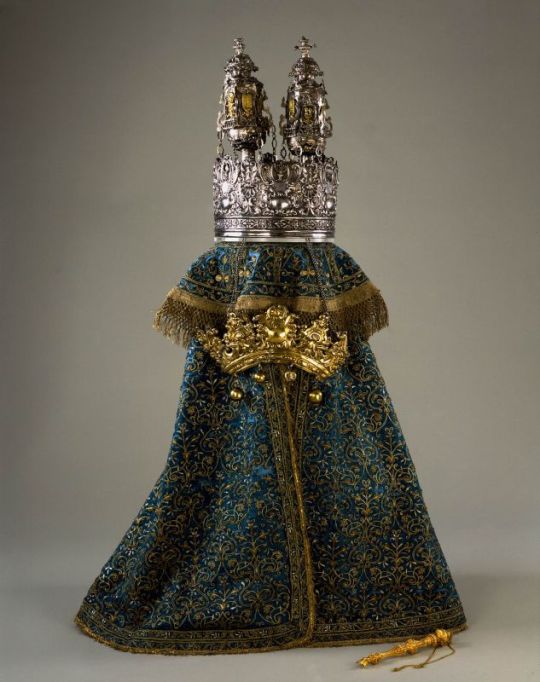
Ornate Torah mantle and crown, Rome, Italy, late 17th century
The Jewish community in Rome is known to be one the oldest continuous Jewish settlements in the world and dates back to the first century BCE. The historic Roman Jews are part of the small but ancient Jewish group of Italqim, speaking an own dialect known as Giudaico-Romanesco. They were later joined by Sephardi, Ashkenazi, Persian and Libyan Jews. The rise of Christianity in the later Roman empire spelled the end of the community’s good fortunes. In 1555, a ghetto was constructed in seven marshy, flood-prone acres at the Tiber River. There, the Jews were obliged to live for 315 years until the creation of the Kingdom of Italy in 1870.
582 notes
·
View notes
Text
Happy Pride
I want to wish a happy Pride to:
Vests
The vest is an iconic lesbian wardrobe staple. For a long time, lesbian fashion has incorporated staples of working-class men's clothing because they are practical and unpolished, which is not typical of women's fashions, and therefore it challenges gender norms. Vests can be formal or casual, they are familiar yet subversive when worn by women, thus making them a lesbian standard.

Frog and Toad
These cottagecore gays are good role models of a loving queer relationship. The first Frog and Toad book was published in 1970. In 1974, the author Arnold Lobel came out as gay to his family. Arnold's daughter has said, “I think ‘Frog and Toad’ really was the beginning of him coming out” because they're “of the same sex and they love each other.” So yes, Frog & Toad are a gay couple.
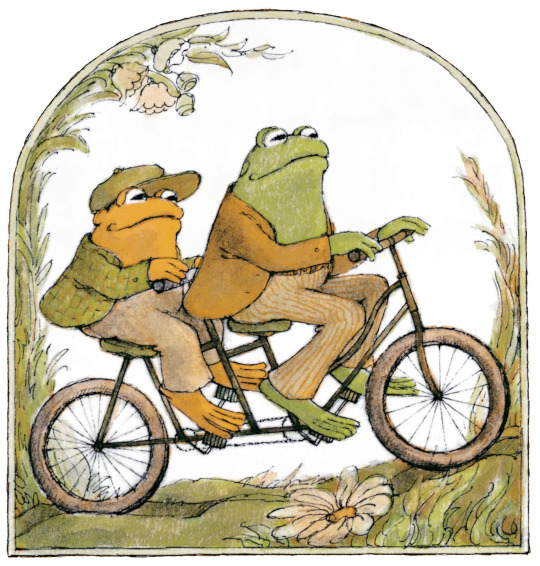
Cake
In the 1990's and early 2000's, a popular dessert was the Better Than Sex Cake, which was a rich chocolate cake. Well, when you're asexual, the name of that cake hits a little different. In 2004, asexuality.org (AVEN) started using cake as a symbol of asexualness since they believe cake IS better than sex. Asexuals may not have much of an appetite for sex, but that does not mean they have no appetites, thus the popular phrase "I'd rather have cake."

Limp Wrists
Why do we associate a limp wrist with male homosexuality? The ancient Romans viewed limp wrists as effeminate, and the association was further strengthened in the 17th & 18th centuries as one hand with a limp wrist and the other hand placed on the hip in an "I'm a Little Teapot" pose was seen as something men in the royal courts would do, and that sort of leisurely life was considered unmanly. In the modern era queer men have been seen as effeminate, so the limp wrist became associated with them. This association was embraced and reclaimed by queer men, and the wider queer community as a whole.
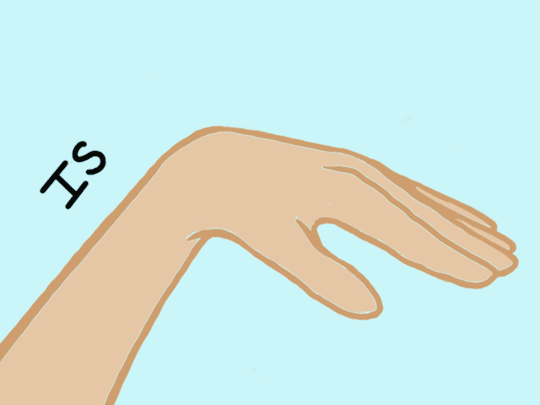
Unicorns
Unicorns have been used in art since the 4th century BCE and it was the Victorians who firmly linked unicorns with rainbows. In 1978, Gilbert Baker created the rainbow flag as a joyous symbol of the queer community. Given that rainbows and unicorns are so intrinsically linked, it’s unsurprising that the mythical creature started to also be used as a symbol for LGBTQ+ people.

Pansies
“Daisy,” “buttercup,” and especially “pansy,” are flowers which have been used to mean a “flamboyant gay man.” Sometimes the word "pansy" has been positive, sometimes definitely not. In the 1920's & 1930's, the underground clubs of the Prohibition era became a hotspot for queer nightlife with drag queens becoming hugely popular entertainment even among the straight clientelle, and this became known as the "Pansy Craze" in reference to the colorful clothing the performers wore. In 2013, because of the association the pansy has to queer people, a group of people in Atlanta used them to block out hatred by putting cardboard pansies on poles tall enough to block the protesters’ signs, and voila, the Pansy Patrol was born.

Queer Sitting
Improperly sitting is one of many seemingly arbitrary traits (like walking fast and being unable to drive) that the online queer community has claimed as part of queer culture, but it's deeper than it seems. Girls are often taught to sit like a lady, such as keeping their knees pressed together, therefore an act of rebellion can be a woman sitting incorrectly. By not sitting properly, it's a rejection of rules about what we can do with our bodies. In movies & television, for decades censorship codes worked to silence queer voices, and creators developed sophisticated ways of coding queerness through body language, such as the way a character sits. Queer sitting resists the process of assimilation and instead says: do what feels right, do with your body what you would like, not what you are told is proper.


RuPaul's Drag Race
Many of us in the queer community take RuPaul's Drag Race for granted with its 15+ seasons, multiple Emmy wins, spin-offs like All Stars & Secret Celebrity, 15 different international versions, a successful Las Vegas show, and the many memes and catchphrases that have come from the show. It’s easy to forget in the 2000's things were very different. There were gay characters on TV and reality shows like Survivor had openly gay contestants, but until RuPaul’s Drag Race premiered in 2009 there wasn’t a truly successful series made by queer creators, starring queer cast members, and made specifically for a queer audience.
RuPaul's Drag Race brought drag performance to a large audience and presents topics traditionally considered taboo on television, such as that it's okay to not conform to societal expectations around gender and sexuality. The show has spread awareness and acceptance as it provides positive representation of queer people and humanizes us as it showcases the struggles of gay, lesbian, gender-nonconforming and transgender people and as the contestants tell stories of coming out, being affected by HIV/AIDS, being rejected by their families and attacked in the streets.

Quiche
in Anglo-American culture, French cuisine is not viewed as "manly" food, which is the first mark against quiche. During the 1970s, quiche was served at brunch spots frequented by gay men which led to it being seen as a quintessentially queer dish, another mark against this food. Quiche became seen as so effeminate that a 1982 best-selling book satirizing masculine stereotypes was titled Real Men Don't Eat Quiche. Instead of the French name "quiche," if it had been called "scrambled egg pie" it likely wouldn't be considered a food for women and the gays, which just goes to show how lame it is to think of food as gendered in some way, but as long as they keep serving it for brunch, we'll keep eating it

Tumblr
Tumblr is known as "queerest place on the internet" and as a platform that "queer[ed] an entire generation." According to Tumblr, the people who use its site are 193% more likely to be LGBTQ compared to those on TikTok, Facebook, Instagram, Snapchat, Reddit, Twitter, and Pinterest. Tumblr estimates that 1 in 4 of its users identifies as LGBTQ. An important reason for this is that Tumblr does not require identity cues to be featured, such age, gender, location, relationship status or legal name, which allows users control over their self-presentation and makes it far less likely family and friends may discover their Tumblr account. This privacy allows queer people on Tumblr to feel more comfortable exploring and expressing their queerness.
Tumblr has been a place of important contributions to queer culture. One example is the large number of queer Pride flags which were first introduced and adopted on Tumblr:
In 2010 Jasper V. introduced his design for a Pansexual flag on Tumblr.
The Polysexual flag was created in 2012 by a Tumblr user named Tomlin.
The Genderfluid flag was created by agender Tumblr user JJ Poole in 2014.
The Agender pride flag was designed by Salem X in 2014 on Tumblr.
The Aromantic flag was created and posted by Tumblr user cameronwhimsy in 2014.
The omnisexual flag was designed in 2015 by Tumbler user pastelmemer.
Tumblr user 2Sanon posted a 2 Spirit flag in 2016.
In 2018 a nonbinary lesbian Tumblr blogger named Emily Gwen introduced the Sunset Lesbian flag to be inclusive of butch, trans, and enby lesbians.

39 notes
·
View notes
Text







Gameboard, German, late 17th–early 18th century
Game of Hounds and Jackals, Middle Kingdom, ca. 1814–1805 B.C.
Mirror with game board design, China, 1st–2nd century
Furniture leg possibly from a game board, Early Dynastic Period, ca. 3100–2900 B.C.
Chess Piece, King, Western Islamic lands, 8th–10th century
Fragmentary gaming board: game of 58 holes, Old Assyrian Trading Colony, ca. 18th century BCE
Chessboard, British, 19th century
14 notes
·
View notes
Text
Saturnalia

By inconnu - User:Jean-Pol GRANDMONT (2011), CC BY 3.0, https://commons.wikimedia.org/w/index.php?curid=26196274
The first Saturnalia was held on 17 December 497 BCE on the pre-Julian Calendar to mark the anniversary of the dedication of the Temple of Saturn. It was set as the fourteenth day before the Kalends (the first day of the month). When Julius Cesar reformed the calendar to bring it back into line with the solar year, he added two days to the previously 29 day'd December, shifting the holiday to the 16th day before the Kalends, though under Augustus, it officially became a three day holiday, from the 17th-19th of December. Later, private celebrations expanded to seven days, though officially it varied depending on the head of state between three and five days. The 17th of December was the first day of the sign of Capricorn, which was the constellation that Saturn reigned. That it was close to the solstice (on the 21-23 of December on the Julian calendar) added more meaning and ceremony to the holiday.

By Filocalus - http://www.tertullian.org/fathers/chronography_of_354_06_calendar.htm, Public Domain, https://commons.wikimedia.org/w/index.php?curid=7849576
During the holiday, no business was to be done, no courts were in session, no classes were administered, and war could not be declared. There were public and private celebrations. Publicly, there were sacrifices conducted as the Greeks would have done them, to signify 'Saturn's assimilation of with his Greek counterpart Cronus' as the Romans tended to adopt and adapt Greek mythology. On the 18th and 19th, there was no work done but the rituals were held in the home with the sacrifice of a suckling pig.

By Sailko - Own work, CC BY 3.0, https://commons.wikimedia.org/w/index.php?curid=33931766
There are some reports by Christian apologists from the 3rd century CE that state that dead gladiators were offered to Saturn as well. There were 10 days through December that had gladiatorial events, sponsored by the treasury of Saturn, and it was those who died that were offered up, or their deaths were in honor of Saturn. However, the evidence points to effigies or masks being offered, or candles were lit to signify the 'light of life'. Roman mythology makes a point of Hercules civilizing the inhabitants of Italy and halting the practice of human sacrifice to Saturn.

By Olivierw - Own work, Public Domain, https://commons.wikimedia.org/w/index.php?curid=10351140
Part of the private celebration of Saturnalia is role reversal, where masters served slaves and normal restrictions were lifted, temporarily making everyone equal. Roman clothing was traded for Greek-style 'dinner clothes', which were considered in bad taste for daytime wear. Whether women participated depended on the mores of the time, though it is implied to have happened. Gambling, which was normally prohibited, was permitted during the celebration. A person being sober during the holiday, like Pliny the Younger, who secluded himself so he didn't 'hamper the games of my people and they don't hinder my work or studies', was a rarity and the exception.
Gift giving was usually done on the 19th of December, but it wasn't proper to give gifts that mark status, but rather gifts of pottery, wax figures, candles, or 'gag gifts' were given. Children often received toys. According to Marcus Valerius Martialis who lived in the 1st century CE, gifts that have lower value were given to closer friends. Patrons often gave money to poorer clients so they could get gifts. There was also a practice of sharing poems which is echoed in modern day greeting cards.

By Unknown artist - Jastrow (2007), CC BY 2.5, https://commons.wikimedia.org/w/index.php?curid=2599140
Since most of the celebration of Saturnalia was at home as opposed to a temple, its celebration continued past its removal from the calendar. While it's uncertain if the date of December 25th was chosen for the birth of Jesus by Pope Julius I in the 4th century CE was based on creating a Christian replacement for Saturnalia and birthday of Sol Invictus or if it was calculated based on the belief that Jesus' death and conception happened on the same day, thus putting his birth 9 months later. In the 3rd century CE, the Passover was celebrated on the 25th of March (under the Julian calendar), however many believe the connection is purely coincidental.
8 notes
·
View notes
Text
7-cup offering bowl—Nahariya, Israel/Palestine, 17th century BCE

This offering bowl is currently in the Met's Collection.
#religious objects#ancient history#ancient art#jewish history#the exact culture this object was related to is not specified#levant#israel/palestine
9 notes
·
View notes
Text

Model of Chariot
Babylonian, 18th-17th century BCE (Old Babylonian)
This model represents a chariot protected by a front shield. The interior of the shield has been stamped with the image of a worshiper standing before a god wearing a tall, horned headdress. He holds a rod and ring in one hand, measuring instruments associated with divine justice. The elongated figures resemble depictions of deities on cylinder seals from the period.
42 notes
·
View notes
Photo

Temple of Saturn, Rome
The 4th century CE Temple of Saturn is situated in the north west corner of the Roman Forum of Rome and has eight majestic columns still standing. Built in honour of Saturn it was the focal point of this ancient cult and stood on the site of the original temple dedicated in c. 497 BCE, which itself had replaced the god's first shrine, the Ara Saturni. In addition, during the Republic the temple also housed the public treasury (aerarium), a function it kept, albeit in a more limited function, in the Imperial period.
Saturn is something of a mysterious figure in Roman religion. Depictions of the god in surviving art have him wearing a veil and brandishing either a sickle or a pruning knife. Perhaps a version of the Greek god Kronos, he was especially worshipped in the Saturnalia festival held every 17th of December (from at least the 5th century BCE) and which lasted several days. This was a festive occasion when people gave gifts to one another, slaves had the freedoms enjoyed by ordinary citizens, more informal clothes were worn instead of the usual toga, and there was a general round of partying and merrymaking which made it the jolliest Roman festival in the calendar; a fact which led Catullus to describe it as 'the best of times'. In later centuries the festival would metamorphose into the Brumalia festival and the similarity of its features and timing - pushed later into December in subsequent centuries - suggest an influence on the Christmas celebration.
The surviving ruins of the temple stand on a pediment of travertine blocks and are themselves composed of pieces recycled from earlier temples. The columns are of the Ionic order and eight still remain on the northern facade. The shafts of the columns are made from Egyptian granite, the two on the side from pink Aswan and the six facade ones from grey Mons Claudianus. Indicative of their differing history, three are monoliths and the others are composed of two pieces fitted together. The Ionic capitals are, in fact, the only parts made specifically for the temple and are from Thasian marble and carved in typical Late Antique style. The architrave carries an Ionic frieze of acanthus leaves and palmettes and came from the previous temple on the site, commissioned by one of Julius Caesar's generals, Lucius Munatius Plancus, in 43 BCE using spoils from the campaigns in Syria.
Within the temple once stood a cult statue of Saturn which became the centre of attention during the Saturnalia when his feet were symbolically freed from the woollen bonds that tied him up for the rest of the year. This act has led to Saturn being associated with liberation, certainly a feature of the Saturnalia festival. The inscription on the exterior of the architrave relates to the reconstruction carried out in the 360s and 370s CE and reads as follows:
SENATVS POPVLVSQVE ROMANVS INCENDIO CONSVMPTVM RESTITVIT
(The Senate and People of Rome, restored following destruction by fire).
Continue reading...
53 notes
·
View notes
Text

The cut sleeve
Among elite men in first-century BCE China, male-male relationships were accepted. Emperor Āi, who ruled China from 7BCE until 1BCE, is particularly remembered for the titles and gifts he heaped upon his lover Dǒng Xián. Āi once even cut the sleeve from his imperial robe rather than pull it out from under Dǒng Xián and wake him from a nap. This story led to the Chinese phrase duànxiù zhī pǐ - “the passion of the cut sleeve” as a euphemism for homosexuality.
Learn more
[Image: 17th century image of an attendant cutting Emperor Āi's sleeve while Dǒng Xián sleeps, by Hong Shou Chen.]
104 notes
·
View notes